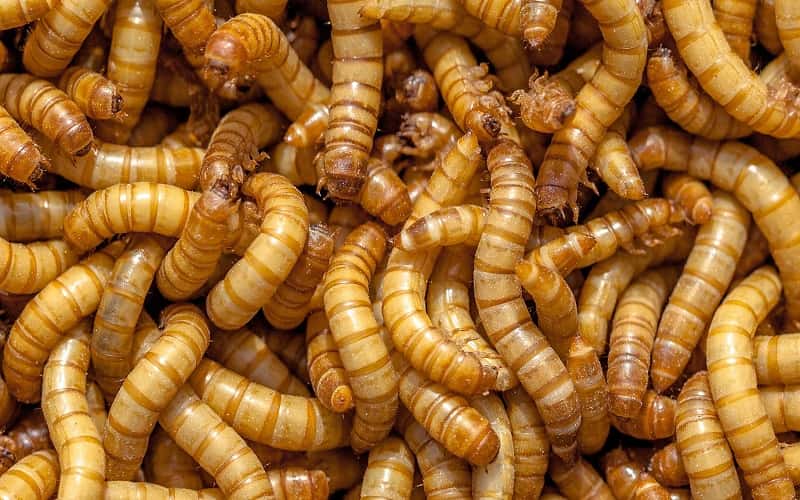Can Hamsters Consume Living Mealworms? You're wondering if your hamster can consume live mealworms. or not? Discover the answer in our article! Here are the best tips for your furry friend!
Hamsters, those inquisitive and active little creatures, require a varied and nutritious diet in order to thrive. As their caregivers, we frequently strive to provide them with the best possible nutrition. One intriguing question is whether hamsters can consume live mealworms. We'll delve into the world of live mealworms as a potential hamster treat in this comprehensive guide.
Live Mealworms: Tiny Wigglers with Massive Potential
Live mealworms, those wriggly creatures that frequently find their way into the diets of reptiles and birds, may make you wonder if they're safe for your hamster pal.
What Is the Composition of Live Mealworms?
Live mealworms are the larvae of darkling beetles and are made up of a variety of nutrients and compounds that help them grow and develop.
Live Mealworm Nutritional Composition:
Live mealworms are high in protein and are nutrient dense, making them a popular choice for supplementing the diets of insectivorous pets.
Why Are Hamsters Able to Consume Live Mealworms?
Live mealworms are a good source of protein, which is essential in the diet of hamsters. Offering them as a treat can provide enrichment and mimic hamster hunting behaviors in the wild.
The Advantages of Feeding Live Mealworms to Hamsters
Including live mealworms in your hamster's diet has several benefits:
Live mealworms are high in protein, which is essential for muscle development and overall health.
Enrichment: Chasing and eating live mealworms can provide hamsters with mental and physical stimulation.
Offering live mealworms can add variety to their diet, which can be beneficial to their health.
The Dangers of Feeding Live Mealworms to Hamsters
While live mealworms can be a tasty treat, there are a few things to keep in mind:
To avoid an imbalanced diet, offer live mealworms in moderation.
To avoid contamination, ensure that the live mealworms are obtained from reputable suppliers.
What Happens If Hamsters Consume Too Many Live Mealworms?
Overfeeding live mealworms can cause a nutritional imbalance, potentially causing digestive upset. To meet all of their nutritional needs, it is critical to provide a variety of foods.
Live Mealworm Poisoning Symptoms in Hamsters
Although live mealworms are generally safe, excessive consumption may result in:
Diarrhea, bloating, or changes in bowel movements are symptoms of digestive distress.
Nutritional Imbalance: Excessive consumption of live mealworms can result in an imbalance of other essential nutrients.
Reduced Appetite: A hamster's interest in its regular diet may wane.
How Many Live Mealworms Can a Hamster Eat?
Allow live mealworms as a treat one to three times per week, and limit the quantity to a few worms at a time.
Supplements and Alternatives
Live mealworms are a great way to add variety to your hamster's diet, but there are other nutritious options as well:
Cooked Eggs: For protein, provide small amounts of cooked egg.
Spinach and kale are excellent sources of vitamins and minerals.
Fruits: As a treat, provide small pieces of safe fruits such as apple or pear.


Post a Comment